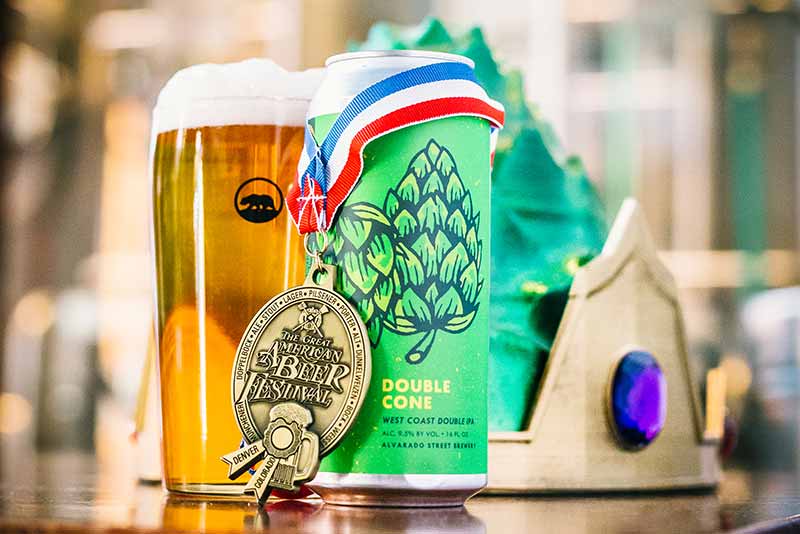
If some is good, more is better. IPAs litter the top of the charts, according to the latest data from Untappd. Double IPAs—also called imperial IPAs—are nearly as appealing as single IPAs, whether West Coast or New England variations.
Many breweries have dialed in their IPA recipes and offer solid takes on the style, whether bitter or hazy. However, balancing the malts and hops out can sometimes be tricky when attempting to bump up the ABV and get into double IPA territory.
We talked with brewers at Alvarado Street Brewery, Bissell Brothers, and Hill Farmstead Brewery—all of which have highly rated double IPAs—who shared their takes on best practices for making your best DIPA.
(Photography courtesy of Alvarado Street Brewery)
What We’ll Cover in This Piece:
Affordable, Industry-Leading Brewery Software
How Does the Industry Define a Double IPA?
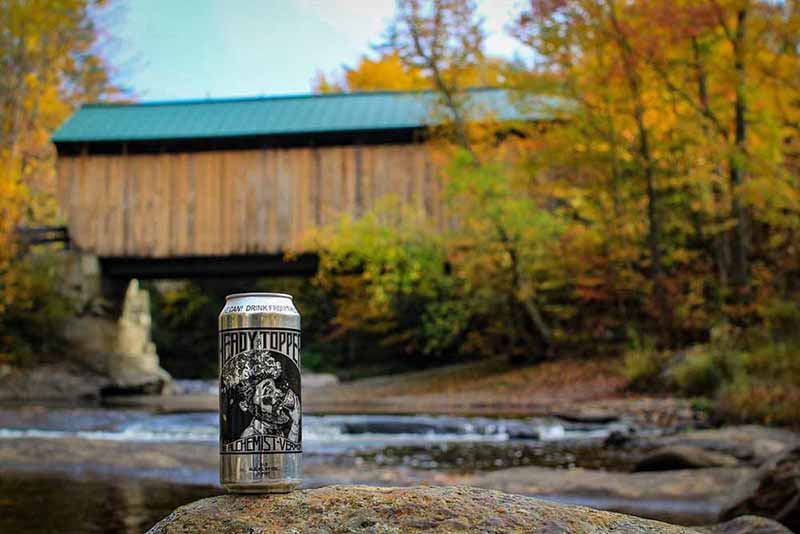
Photography courtesy of The Alchemist
In short, a double IPA is a higher-alcohol version of an IPA. While brewers have different perspectives on the ABV of IPAs, double IPAs, and even triple IPAs, according to the Brewers Association, a double IPA is anywhere between 7.6% to 10.6% alcohol by volume.
What a double IPA is not is an IPA doubled. You won’t be multiplying your recipe of hops and malts by two. It will be a scaled-up version of an IPA, but definitely not double everything.
Alvarado Street Brewery Owner and Director of Brewing Operations J.C. Hill, who started his career in San Diego, admits he has an old-school take on a double IPA.
“Really pale, really dry. Bitter but balanced,” J.C. Hill says of his ideal double IPA. “[With] knock-you-over-the-face hop aroma.”
Bissell Brothers Owner and Head Brewer Noah Bissell described an ideal double IPA matter-of-factly.
“Nuanced intensity,” he says in an email.
Hill Farmstead Brewers Elizabeth MacKenzie and Shaun Hill (who is also the brewery founder and owner) shared their thoughts in an email to Next Glass, citing beers such as The Alchemist’s Heady Topper and Russian River’s Pliny the Elder as optimal examples of a double IPA.
“Most of my references for anything considered ‘the best’ are historical references attached to a particular time and place,” says Shaun Hill, citing the beers above.
What Does the Grain Bill Look Like for a Double IPA?
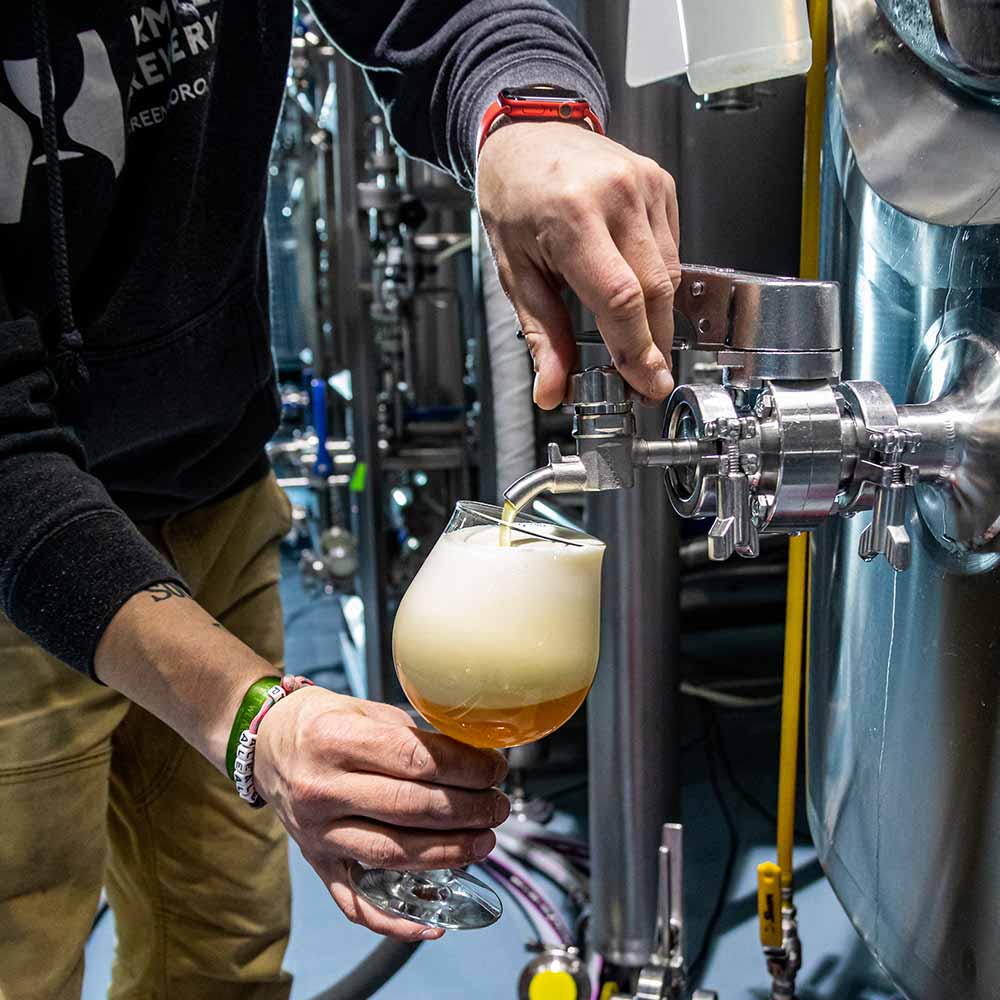
Photography courtesy of Hill Farmstead
For Hill Farmstead, they don’t overthink the grain bill.
“Simplicity,” Shaun Hill and MacKenzie say. “Two-row.”
J.C. Hill concurs with the Hill Farmstead approach, opting to use pale 2-row malt as a majority, but they add a little more to the mix.
“We put a tiny bit of wheat for foam and to complement some body. These beers dry out a bit, so the wheat gives texture,” J.C. Hill says, adding that he and the brewers at Alvarado Street love drinking pale beer. “We do [also] use some dextrose to aid in drying out the beer.”
Bissell also says they keep their grain bill simple.
“Little to no crystal, and if so, nothing over about 30 liters,” Bissell says. “Often, we use Golden Promise for the base, but 2-row and pilsner malts can work great. [We add] five to fifteen percent of a high-protein adjunct or malt like wheat, rye, and sometimes oats.”
What Is a Typical Double IPA Hop Schedule?
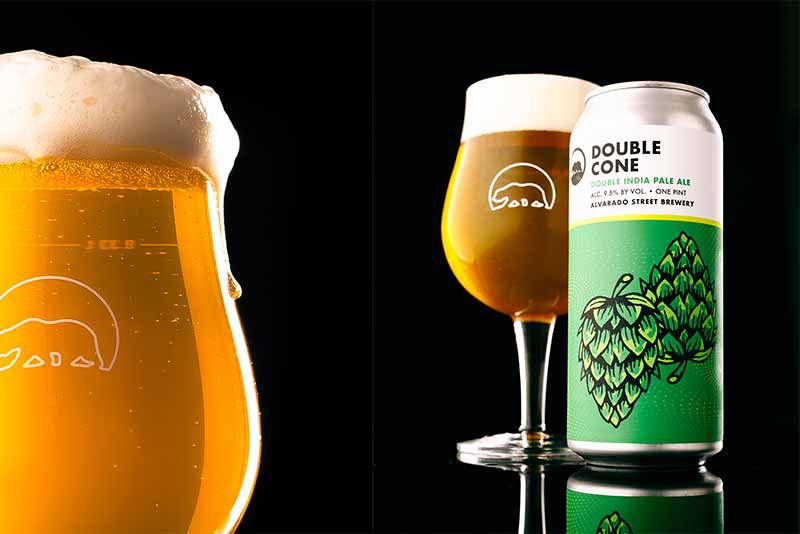
Photography courtesy of Alvarado Street Brewery
Bissell says their double IPAs have several phases of hop additions, including wort hopping, whirlpool, and two dry-hop additions.
According to Bissell, they shoot for less than ten IBUs in that first wort hopping and then drop somewhere from one to one-and-a-quarter pounds per barrel in the whirlpool, then three to four pounds per barrel, split into their two dry-hop additions.
“Our hopping rates have trended down over time and have yielded cleaner, less vegetally bitter beers,” Bissell says.
Shaun Hill and MacKenzie say that the hopping rates at Hill Farmstead have changed over time. The brewery works with the metric system, using about one kilogram of hops per hectoliter (about 2.2 pounds per .8 barrels) on the hot side and anywhere from one to two kilograms per hectoliter (2.2 to 4.4 pounds per .8 barrels) in the dry hop.
One of Alvarado Street’s top-performing double IPAs is Double Cone. J.C. says that Double Cone undergoes about 120 IBUs, a high target that means they use several hop products, including Cryo Hops, T-90 pellets, and CO2 extract.
“Our whirlpool is about one pound per barrel,” J.C. Hill says. “Then Double Cone goes through two dry-hop stages, with a combo of T-90 and Cryo Hops, in the ballpark of about four to five pounds per barrel.”
What ABV Makes for a Great Double IPA?
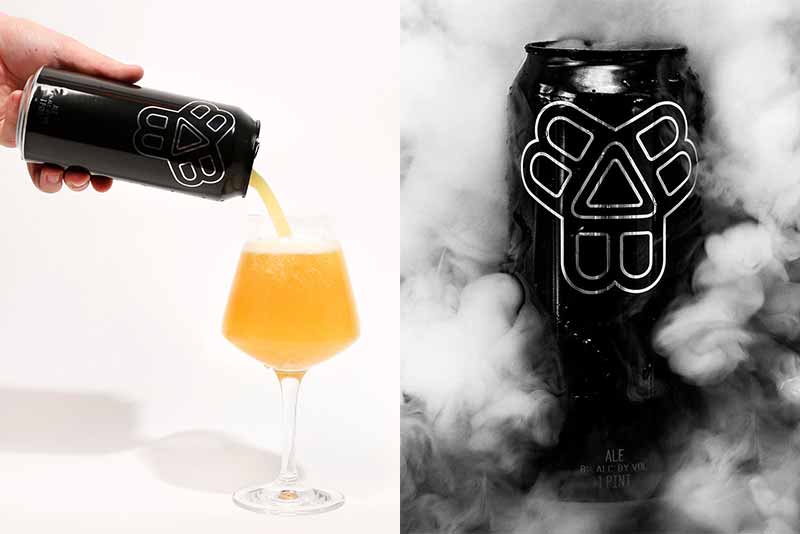
Photography courtesy of John A. Paradiso (on the left) and @bissellbrothers (on the right)
J.C. Hill says Alvarado Street’s Double Cone has a sweet spot at 8.5% ABV, but it has gone as high as 9.5% ABV. Although, that isn’t ideal.
“We hover in 8.5% ABV and 8.8% ABV. Over 9% ABV, it becomes too much,” he says. “It’s all about balance and drinkability.”
Bissell’s double IPA ABV preference is slightly lower than Alvarado Street’s.
“Personally, I don’t like to drift much higher than 8% ABV, or alcohol gets increasingly harder to hide and cuts into the body and hop profile,” Bissell says. “7.5-8.3% ABV is our preferred range.”
Hill Farmstead was specific but vague at the same time.
“Whatever the lowest accepted style guideline allows for a double IPA,” Shaun Hill and MacKenzie say in the email. Going by the Brewers Association guideline, that’s 7.6% ABV.
What Considerations to Know About Double IPAs
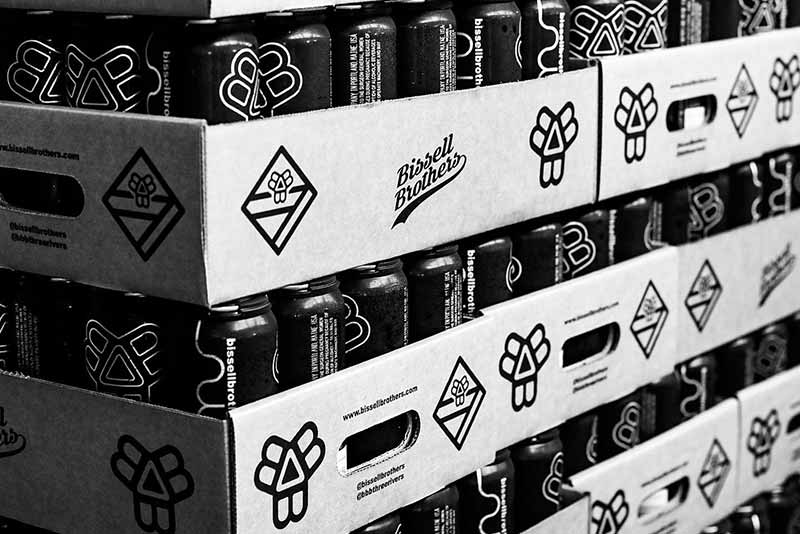
Photography courtesy of @bissellbrothers
Shaun Hill and MacKenzie, while admitting they are not experts in the double IPA realm, said that it all comes down to being quaffable.
“Attempting to achieve drinkability and roundness while not veering too far in the direction of alcohol or fusel production,” they say. “It’s all about hop expression with drinkability.”
Bissell says it’s about basics when brewing a quality double IPA.
“It’s cliche but true: Oxygen is your worst enemy, especially in this style,” he says. “Also, don’t overcomplicate it. From water profile, the number of hop varietals, to grist, use a lot of a few ingredients and let them shine.”
J.C. Hill focused on fermentation when considering how to make a great double IPA.
“One thing that’s really important is a really healthy pitch [of] yeast,” he says. “Nothing will tank your double IPA more than poor yeast health or not pitching enough yeast.”
Three Tips for Making a Top-Rated Double IPA
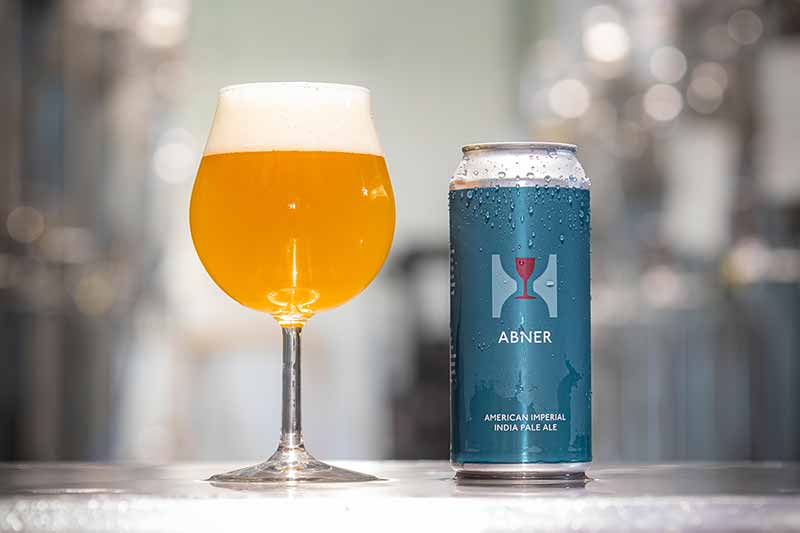
Photography courtesy of Hill Farmstead
Bissell, Shaun Hill, and MacKenzie all feel it’s about patience in achieving an excellent double IPA.
Shaun Hill and MacKenzie note that complete attenuation is optimal for the double IPA to achieve greatness.
“We notice that some of the current DIPAs in the market tend to be under-attenuated,” the Hill Farmstead brewers say. “Perhaps the American preference for sugar and sweetness has penetrated this category—but we find drinkability to be of utmost import with crafting any beverage.”
Bissell takes it a step further.
“Often, an extra three to ten days of conditioning time—ideally with the dry hop dumped or the beer moved to the brite tank—can be the difference between a decent double IPA and an excellent one.”
J.C. Hill takes a step back and stresses to focus on the details.
“It all comes down to following the basics and doing it right, having the best practices,” he says. “It’s a complex process, but if you break it down on a step-by-step level, it’s simple.”
Three Examples of a Great Double IPA
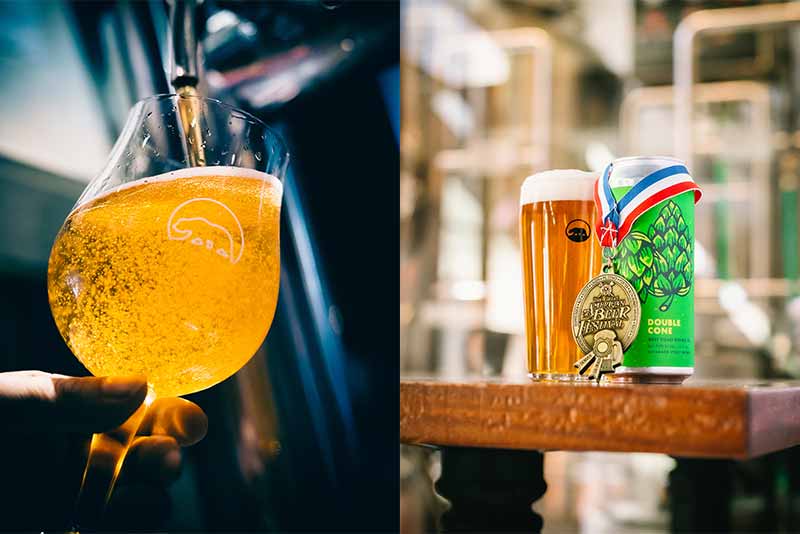
Photography courtesy of Alvarado Street Brewery
Alvarado Street Brewery’s award-winning Double Cone changes up from batch to batch based on hop harvest and other variables, according to J.C. Hill. But the double IPA typically clocks in around the 8.5% ABV to 8.8% ABV range with high IBUs. J.C. Hill notes that the beer took Alpha King and GABF gold on two separate batches in 2019, won silver at the 2020 GABF, and silver at this year’s ‘The Bistro Double IPA Competition’ and World Cup.
“It is different each time, but the same building blocks are applied when creating it,” he says. “Honestly [the awards] keep us hungry to keep improving it.”
Bissell has many top-rated double IPAs, according to Untappd data. With a 4.51 rating out of 5 on Untappd, Swish is the highest-rated one in their portfolio. The 8% ABV beer has 80 IBUs and features Citra, Mosaic, and Simcoe hops.
“[Swish was] our first scaled-up DIPA, and it put us on the map for many,” Bissell says. “I’m very proud of how many notes … it touches in the spectrum of hoppy notes (tropical, dank, floral, citrus, herbal) without confusing itself.”
Hill Farmstead brewers Shaun Hill and MacKenzie tout Abner as its top double IPA. The beer, named after the family’s great, great grandfather—whose home once stood on the brewery site in Vermont—hits 8.2% ABV and touts a 4.5 rating on Untappd.
“There have been a few batches of Abner that are permanent memory stamps, including Batch 1,” Shaun Hill says. “The first time that our specific hop combination, Rahr 2-row, and our water had ever been fermented with Conan, which means that nothing else had ever tasted like it before. Absolutely unique.”



